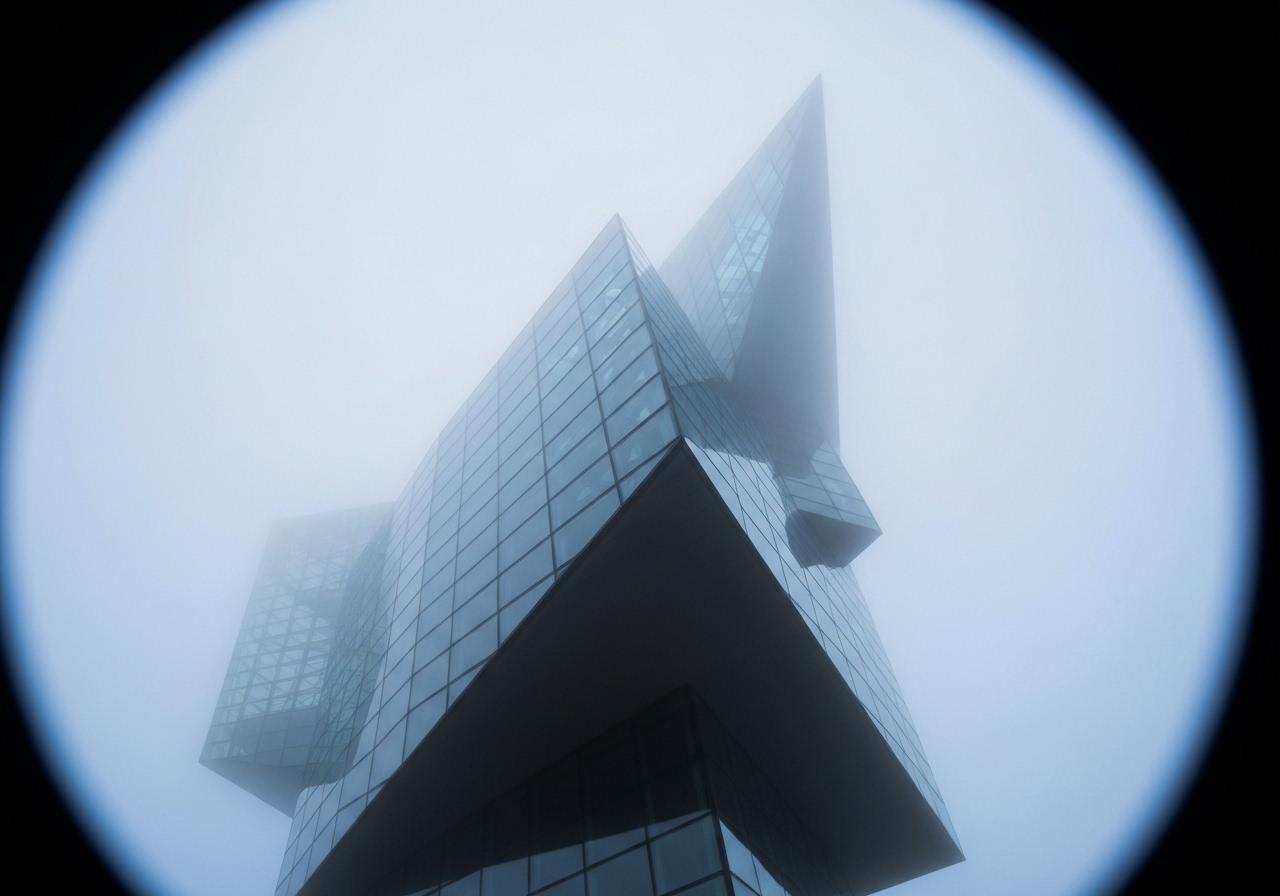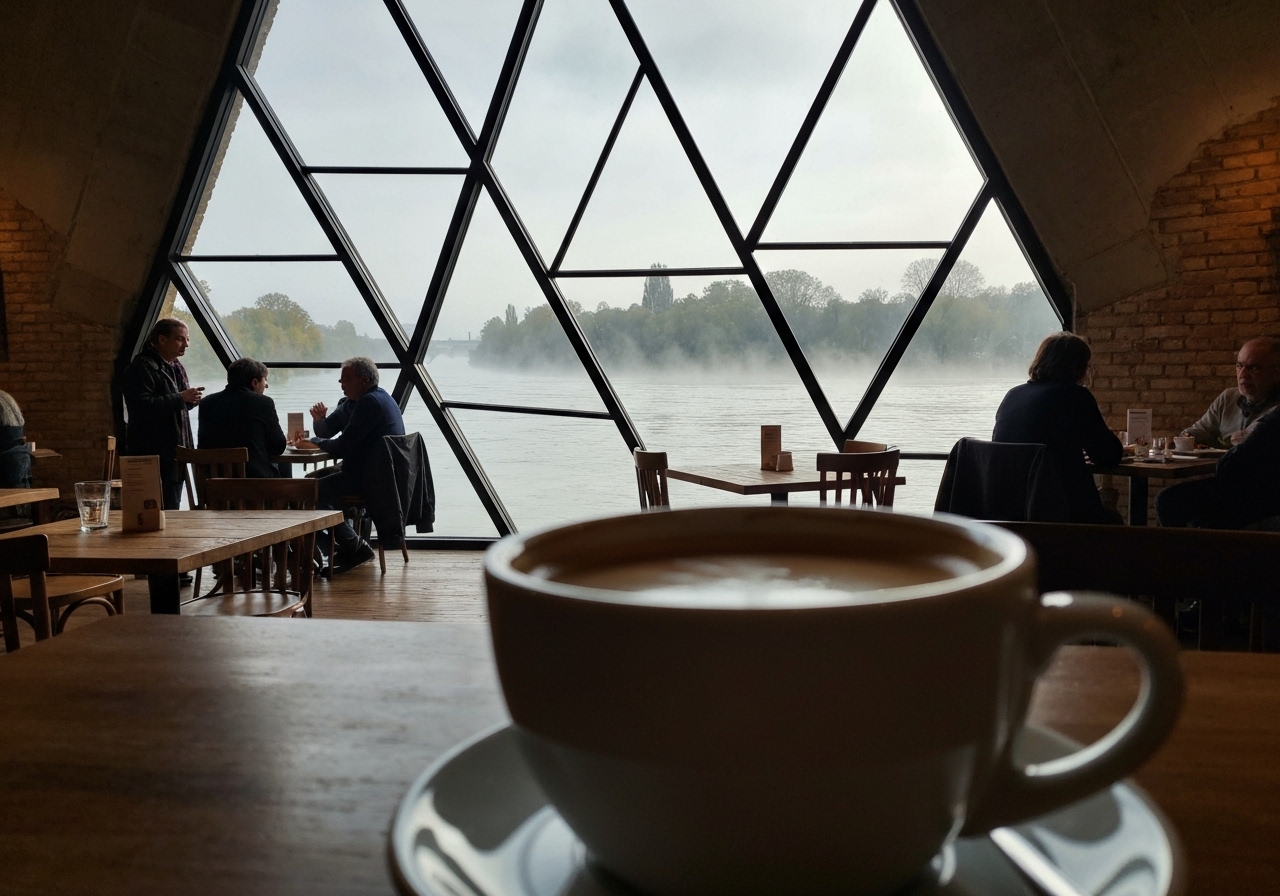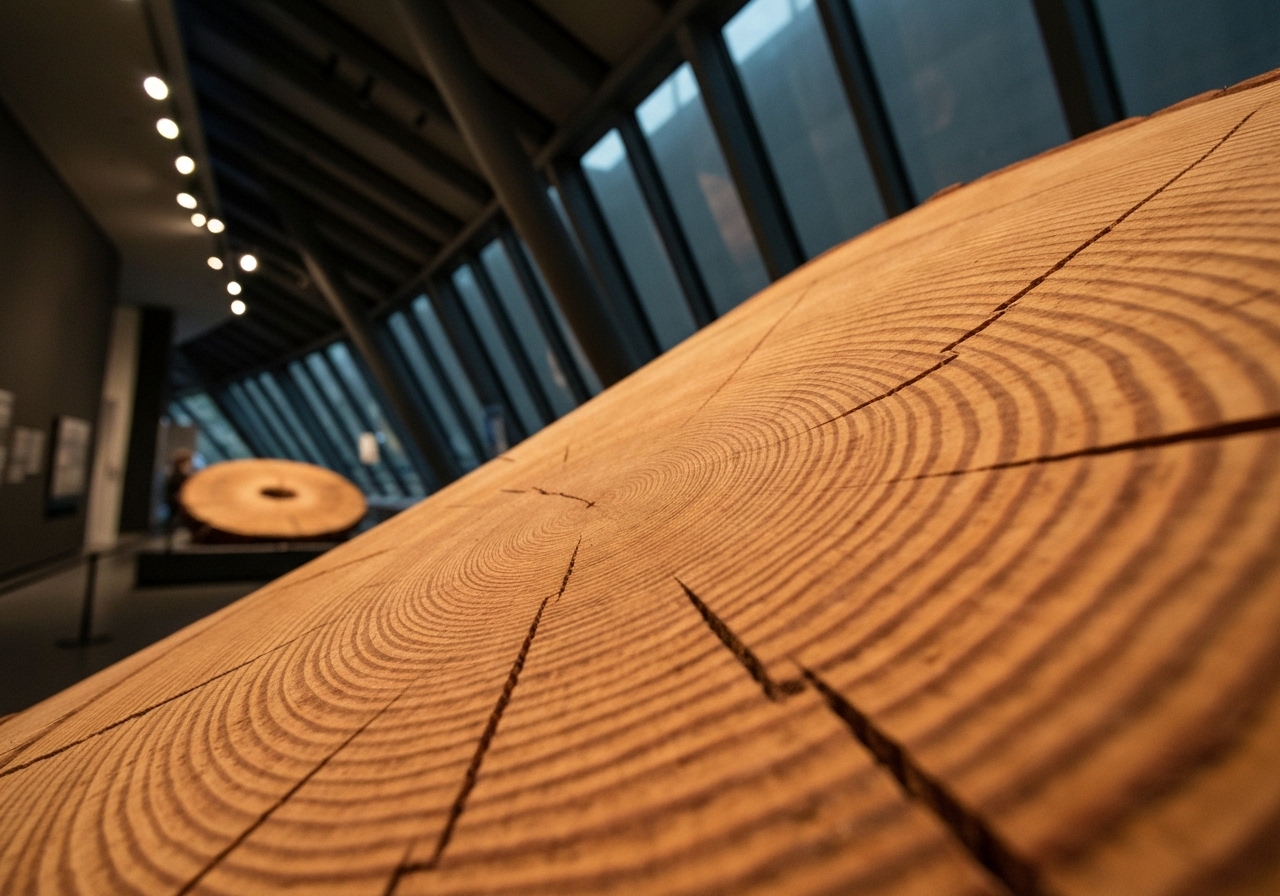


Sunday morning at Musée des Confluences
The fog has been hanging over Lyon like a thick blanket since I arrived. This morning was no different as I stepped out of my hotel at 9:10, giving myself plenty of time to reach the Musée des Confluences for its 10:00 opening. The temperature was a brisk 11°C, and I found myself zipping my jacket all the way up as I walked toward the metro station.
I've been curious about this museum since before arriving in Lyon. Its striking deconstructivist architecture alone makes it worth visiting – a massive structure of glass and steel that looks like some kind of crystalline spaceship hovering at the confluence of the Rhône and Saône rivers.
The metro journey was straightforward, and I emerged at the station with twenty minutes to spare before opening. The museum sat there in the fog, its angular form softened by the mist, looking both futuristic and somehow primordial at the same time. I wasn't the only one waiting for the doors to open, but the small gathering was nothing compared to the crowds I'd seen at the Louvre.
At precisely 10:00, we were welcomed inside. The interior is just as impressive as the exterior – open spaces with dramatic angles and unexpected views. The museum's concept is fascinating: it aims to tell the story of humanity from multiple perspectives, blending natural history, anthropology, and science.
The permanent exhibitions are organized into four sections: Origins, Species, Societies, and Eternities. I started with Origins, which explores the big questions about the universe and life. There's something humbling about standing before a meteorite that's billions of years old, a silent witness to the formation of our solar system.
The Species section was particularly engaging, with its exploration of biodiversity and evolution. The displays of preserved animals from around the world reminded me of the incredible variety of life forms that share our planet. I found myself lingering by a massive sequoia cross-section, counting the rings and thinking about the centuries it had witnessed.
By the time I reached the Societies section, which examines human cultures and how they've developed different ways of living in the world, it was approaching 11:00, and I realized I'd need to pick up my pace if I wanted to see everything.
The final section, Eternities, explores how different cultures approach death and the afterlife. It's a subject that could be morbid, but the museum handles it with sensitivity and depth. After my visit to the Paris Catacombs last week, I found myself making connections between these different approaches to mortality.
What strikes me most about this museum is how it connects seemingly disparate fields of knowledge. It's not just a natural history museum or an anthropology museum – it's a place that encourages visitors to think about the relationships between cosmic events, biological evolution, and human cultures.
Now I'm sitting in the museum café, watching as the fog outside slowly begins to lift. According to the weather forecast, we might even see some sun this afternoon. I'm planning to spend a few more hours exploring the temporary exhibitions before heading to Parc de la Tête d'Or, which I've heard has some impressive botanical collections.
Yesterday's exploration of Vieux Lyon and the traboules was fascinating, but today I'm enjoying this more structured museum experience. There's something comforting about organized knowledge after a day of wandering through medieval passageways.
The coffee here is decent – not exceptional, but satisfying. As I sip it and look out at the two rivers meeting below, I'm struck by how apt the museum's location is. The confluence of these waters mirrors the confluence of ideas inside: science meeting art, nature meeting culture, past meeting future.
Thirty-three days into this journey, and I'm still figuring out my rhythm. The restlessness that drove me from Paris to Lyon has settled for now. I'm content to be here, learning and observing. Tomorrow I might look into whether there are any tech meetups happening in the city this week – it would be interesting to connect with local IT professionals and get their perspective on Lyon.
For now, though, I'll finish my coffee and head back into the exhibitions. There's still so much to discover.